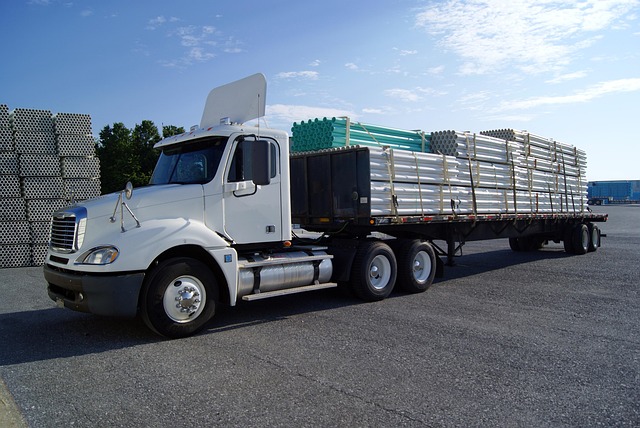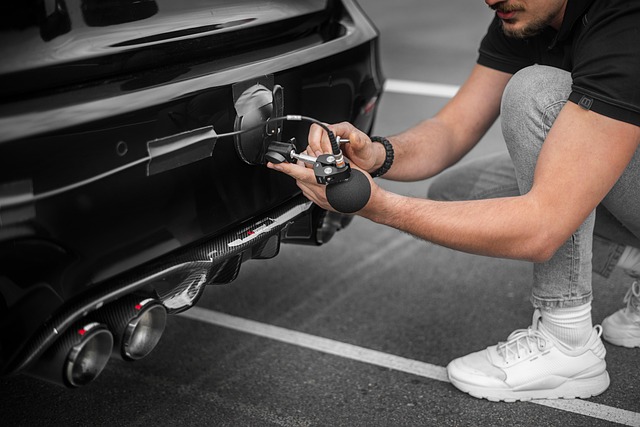Looking to register your car in California? This comprehensive guide walks you through every step, from understanding key requirements to completing the application process. We cover essential documents, how to verify your Vehicle Identification Number (VIN) online, and navigating the fees involved. By following these simple steps, ensure a smooth registration experience using reliable VIN verifier tools available.
- Understand California Car Registration Requirements
- Gather Necessary Documents for Vehicle Registration
- Verify VIN and Check Eligibility Online
- Complete and Submit the California Vehicle Registration Application
- Pay Registration Fees and Receive Your Plate
Understand California Car Registration Requirements

Before registering your car in California, it’s crucial to understand the state’s specific requirements. Unlike some other states, California mandates that vehicles be registered through a dedicated DMV office or designated service centers, and it offers both in-person and online registration options. One critical step is ensuring your vehicle has a valid emissions test certificate, which confirms it meets air pollution standards. Additionally, all vehicles over 10 years old must pass a safety inspection to prove they’re safe for road use.
A key component of the process involves verifying your car’s Vehicle Identification Number (VIN). This unique 17-character code acts as a fingerprint for your vehicle and is essential for registration. In California, you can verify your VIN through various methods, including utilizing a mobile VIN inspection or verifier service, which provides convenience by allowing you to check your vehicle’s history from the comfort of your home or on-the-go.
Gather Necessary Documents for Vehicle Registration

Before registering your car in California, make sure to gather all the essential documents. One crucial piece is the Vehicle Identification Number (VIN) verifier or certificate, which can be obtained through a mobile VIN inspection or verification service. These services provide convenient and accurate information about your vehicle’s history, ensuring you have all necessary details for a smooth registration process.
Additionally, you’ll need proof of ownership, typically a title document, as well as valid identification such as a driver’s license. Ensure these documents are up to date and accurately reflect the current state of your vehicle. For out-of-state transfers, you might require additional forms and documentation, so it’s best to check with the California Department of Motor Vehicles (DMV) for specific requirements.
Verify VIN and Check Eligibility Online

Before starting the registration process, it’s crucial to verify your vehicle’s VIN (Vehicle Identification Number) and ensure your car meets California’s eligibility criteria. The state provides an online VIN verifier that allows you to check a vehicle’s history and current status. This tool is readily accessible on the California DMV website, making it easy for prospective car owners to initiate their registration journey.
Using this mobile vin verifier, you can quickly determine if your car is eligible for registration in California, saving you time and effort later in the process. It provides valuable insights into the vehicle’s past, including any accidents, outstanding recalls, or other potential issues that could impact registration. This initial step is a game-changer, ensuring a smoother experience when it comes to navigating the labyrinthine registration procedures.
Complete and Submit the California Vehicle Registration Application

After gathering all necessary documents, it’s time to complete and submit the California Vehicle Registration Application. This form requires detailed information about your vehicle, including its make, model, year, and unique VIN (Vehicle Identification Number). The VIN is a crucial piece of data for any car registration process, as it allows authorities to verify the vehicle’s history and authenticity.
Ensure that you accurately input all details during this step. You can obtain the application from the California Department of Motor Vehicles (DMV) website or in person at a local DMV office. When submitting your application, consider opting for a mobile vin inspection or a vin verification service to streamline the process further. This additional step involves using advanced technology to confirm your vehicle’s details, ensuring accuracy and efficiency in registration.
Pay Registration Fees and Receive Your Plate

After completing your vehicle’s registration application, it’s time to pay the required fees. These include the registration fee, which varies based on the type and age of your vehicle, along with a $25.00 vehicle identification number (VIN) verifier fee. This step is crucial as it ensures that your car meets all safety and environmental standards before hitting the California roads. Once you’ve settled the fees, you’ll receive your unique license plate.
The process often involves a mobile VIN verification or inspection, where a designated official checks your vehicle’s details against the provided VIN to ensure authenticity and compliance. This digital innovation streamlines the registration experience, making it more accessible for California residents to get their cars registered efficiently without navigating traditional, time-consuming procedures.
Registering a car in California is a straightforward process that ensures your vehicle complies with state laws. By understanding the requirements, gathering essential documents, and utilizing online tools like a VIN verifier, you can efficiently navigate each step. Completing the application, paying the fees, and receiving your plates marks your vehicle’s official entry into the Golden State’s bustling automotive landscape.



